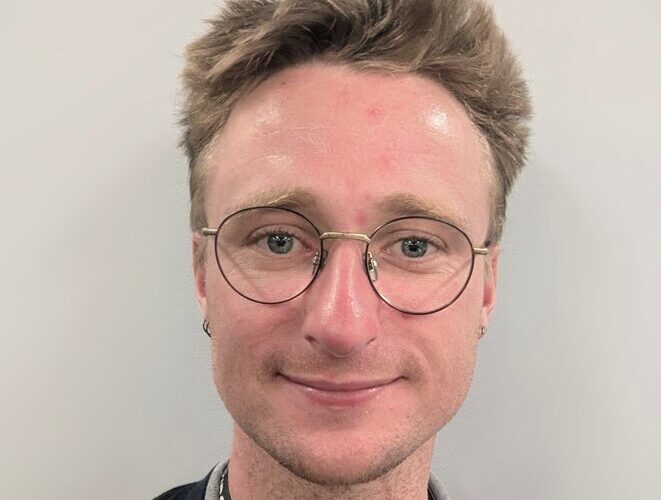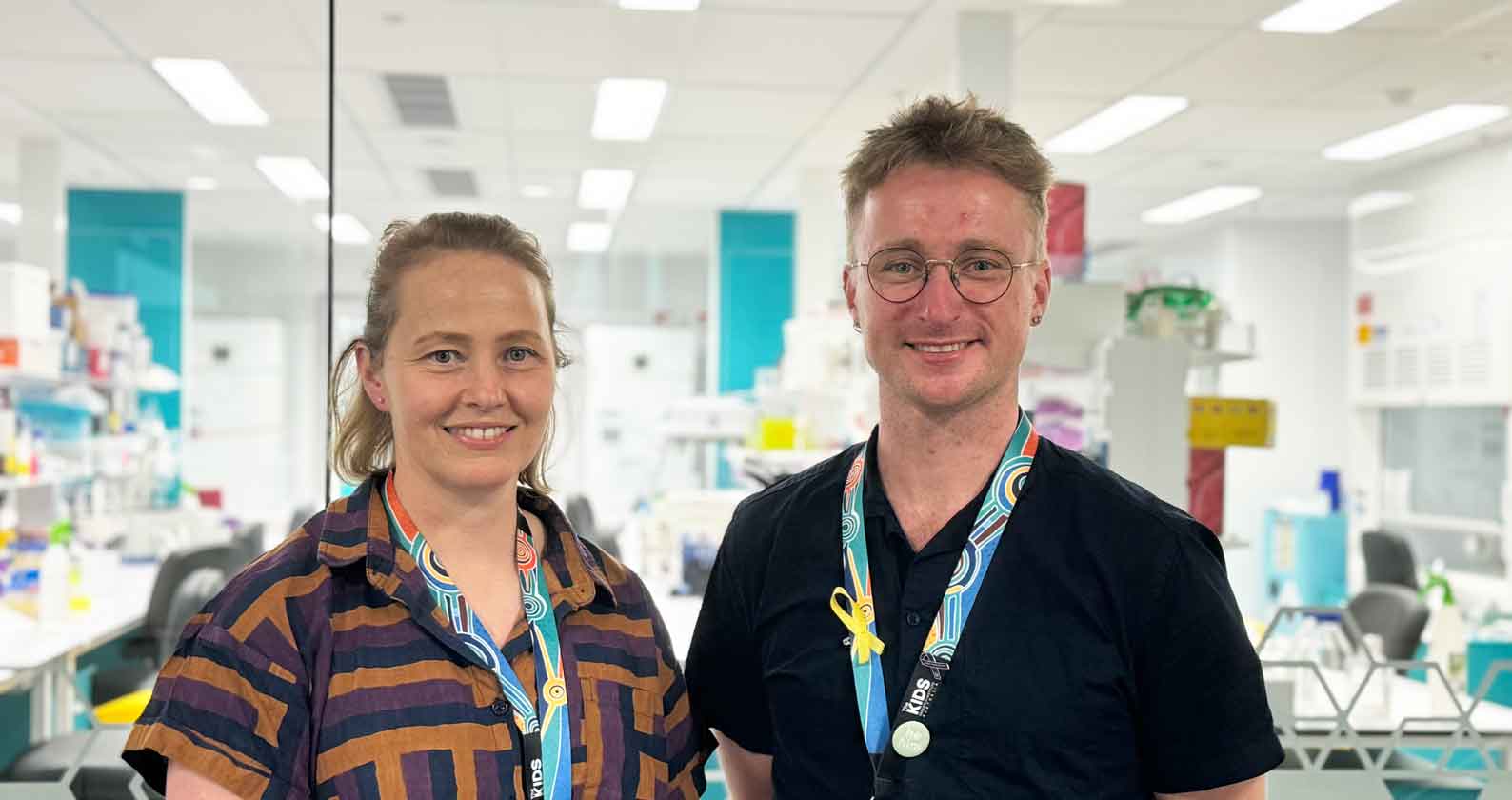Reading time: 7 minutes
When a PhD opportunity presented itself through a professional network, Mike jumped at the chance to develop his career. Now, under the mentorship of his supervisor, Shannon, he’s learning how to balance his ambitious research goals with driving realistic breakthroughs in preterm birth and exercise research.
Michael Beaven is completing a PhD with the Curtin School of Allied Health, supervised by Curtin University’s Associate Professor Shannon Simpson, with Dr Elizabeth Smith and Professor Andrew Maiorana as co-supervisors. Mike and Shannon reflect on the challenges of planning out a project, the importance of trust in a student-supervisor relationship and how a PhD helps you to grow personally and professionally.
Mike:
I had a long gap between ending study and starting my research journey. I did my honours at the University of Auckland and graduated in 2013 with a double major in sport and exercise science and physiology. I moved into respiratory physiology because that was the job I found, and after about 18 months or so, I moved to Perth, where I still work as a respiratory and sleep scientist at Fiona Stanley Hospital.
The PhD was advertised through our professional channels. There’s a society called the Australian New Zealand Society of Respiratory Science (ANZSRS). The PhD was advertised through there not more than a few weeks before the closing date, reaching out to respiratory scientists who might be interested in some postgraduate research, and it took my fancy.
My PhD project is focused on understanding the long-term health outcomes of those who are born preterm, and particularly the effects of preterm birth on the physiological responses to exercise. I’m investigating how the lungs, heart and muscles work together to allow us to exercise and how preterm birth affects each of those areas.
Through my research, I hope to gain an understanding of how preterm birth impacts exercise capacity and what factors associated with preterm birth are impacting exercise capacity. We know that those who are born preterm are more likely to have lower exercise capacity than their term-born age-matched peers, so moving forward, I’d also like to see some of this research expanded into exercise intervention studies where we can look at how trainable those who are born preterm are compared to their term-born peers. This may eventually lead to targeted approaches at improving exercise capacity, which will also improve long-term health outcomes.
One challenge in the research is that I want to do everything. I had this grand elaborate plan, which I talked about through milestones one and two. I had a couple of weeks to prepare for this meeting and when I presented it, Shannon turned around and said: Mike, how many PhDs are you doing? There are probably about 12, 13 research papers here and you really can’t do that in the timeline unless you’re willing to do a whole lot of unpaid work and blow out your PhD by a few years. I’ve had to learn that the PhD doesn’t have to be the end of the research. I don’t have to just put everything in the PhD and call it quits. I can keep going afterwards.
It’s a marathon, not a sprint.
The greatest achievement so far was winning ANZSRS’s New Investigator Award in 2024 at the National ASM. I’ve been involved with ANZSRS for a long time, holding multiple local positions, organising meetings, attending local branch meetings, and background positions to support the national board. At our most recent national meeting, this was my first opportunity to present in-front of friends, colleagues and professionals, some that I’ve known for 10 years, share some of the research that I’ve done and the work that goes into this. Being able to showcase that and be recognised for this work it was really exciting.
An important thing I’ve learned from Shannon, is the true meaning of trust. Shannon’s team, how she builds and maintains a culture of trust, and reinforces this, is truly inspirational. You can teach almost anyone to do research, to do the job, but trust, I have learnt, is so much more important. Being a good human is a rite of passage in the team.
Shannon’s supervision doesn’t involve hand-holding or giving you the answer. She gives you the tools or guides you to those tools. She’s not looking over my shoulder every day to work out what I’m doing. She’s not going; ‘what are you up to, Mike?’ She knows she’s going to get an update when it’s needed. But, whenever I’m starting to get off-track, or it might seem that way, she’s always got the right thing to say, the right approach or the right task to give that will put me back on track. It’s really allowed me the room to grow. She has completely changed my perspective and how I feel about working in a clinical setting day in, day out.
Shannon:
The PhD project was put forward as a strategic scholarship through Curtin. Soon after, Mike approached me before he put in an application. When we chatted, it became clear that he was super passionate about exercise science and exercise physiology. Although he wasn’t 100% sure what he really wanted to do with the PhD, it would be a really good stepping stone for him whether he decided to do some more research or take on a leadership role. Mike had a lot to offer in terms of the skills he brought in, but I also thought that we had a lot to offer in return.
I would say my supervisory style is bespoke. What I’ve come to realise is that different students need different things. While someone like Mike comes in career mature – he doesn’t need me to teach him about being in a workplace – other students I have come to me at 21 and it’s their first seat at the table in a professional setting. I have had to cater for what they need.
I’ve had to say to Mike a few times: this is a PhD thesis, not a Nobel Prize.
That’s the biggest challenge. It’s the balancing of expectations and keeping it real. Mike gets three and a half years to get this piece of work done. I keep reminding him: you only need to get enough down to get the PhD – you don’t need the Nobel Prize right now. You can have that later in your career.
Mike has won a bunch of awards locally and nationally. That’s just a testament to how hard he works. But I would say that the biggest achievement is watching Mike grow as a human in the time that he’s been in our team. Mike came from a very dog-eat-dog environment when he first joined our team, and because that’s where he’d been brought up, he brought in some of those elements. I wanted to teach him a different way of being part of a team and a different way to be a team member. The amount of growth that Mike has done in that area and the investment he’s made in himself to make those changes is nothing short of phenomenal.
My advice is to make sure that you can work with your PhD supervisor. You rely on that person for three to four years of your life and it is a period of huge growth both professionally and personally. You need to know that the person you’re going to work with is as committed to you as you are to them and the project. You must have a shared vision, shared commitment and clear expectations. If you don’t have that, you need to move on.
About the researchers:

Michael Beaven
Mike is in the 3rd year of his PhD journey with Curtin School of Allied Health, exploring the long-term impacts of preterm birth on the physiological responses to incremental exercise. He conducts his PhD research at the Kids Research Institute Australia at Perth Children’s Hospital.

Associate Professor Shannon Simpson
Shannon is Co-Head of the Children’s Lung Health Team at Kids Research Institute Australia and an international leader in research on respiratory outcomes after preterm birth. She leads diverse studies, spanning clinical trials, cohort studies, and laboratory-based science, which are supported by strong community engagement and global collaborations.



